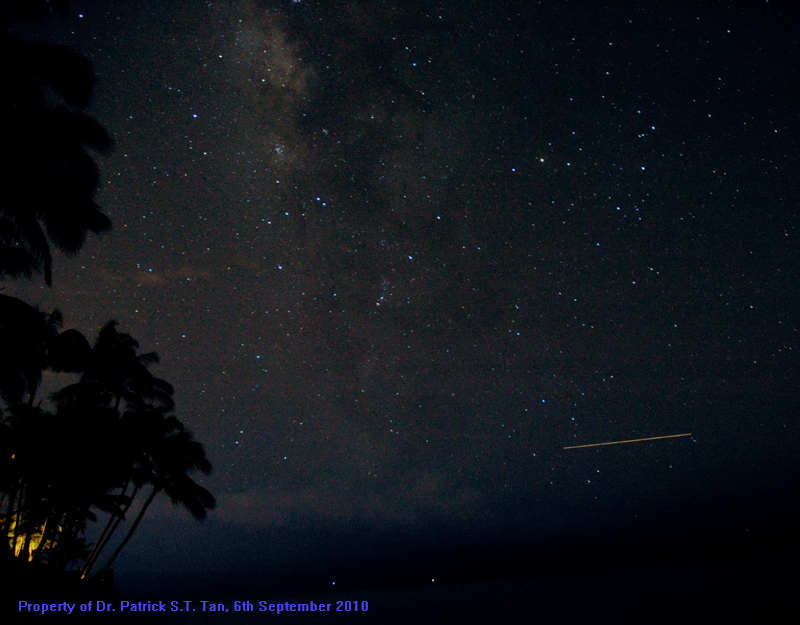
The Milky Way in September from Maui
In the first 2 weeks of September 2010, my brother Paul and I took a trip to Maui, Hawaii to do some surfing. On the first night there, I was amazed to see the clarity of the night sky to the extent that the milky way was visible even from the backyard of the lovely rented cottage (VRBO #41601) we were staying in, in a quiet residential suburb of Kihei with sodium street lamps. 50 yards down the street from our front drive was the beach landing and the view of the sky from there was even better. So we borrowed a tripod from our obliging hosts, and went down to the beach with Paul's Nikon D70. Here are the best of the shots he took. We met a pair of night-anglers fishing for Ono (a delicious local fish) with squid as bait. They were curious of what we were doing with a camera in the middle of a dark night, and I was happy to enlighten them. They lived their lives under a sky which they barely noticed, and yet was so rare and precious to me!
Roll your mouse over the picture to identify constellation
We couldn't do much about the yard lights of the property underneath the coconut trees, nor about the shooting star!
All the pictures have minimal processing in the form of subtraction of light pollution colour using a mask created by sampling the blurred original image, and the midtones enhanced with black point resetting. Finally, the coarseness of the high ISO setting on the camera (1600) was reduced by one pass of Noise Ninja with maximal settings for strength and smoothness, contrast 14. All these steps were carried out with Photoshop 7.
The next picture shows a larger view of the Milky Way to include the centre of our galaxy. This was particularly special for me as it isn't possible to see galactic centre from Sunningwell. The eagle-eyed and experienced among you will be able to see Sagittarius as well as Scorpius, M7 and M6.
I am aware that the picture is particularly grainy and may be even more so for those of you with bright monitors or monitors which haven't been calibrated correctly - but this is due to the high ISO setting and also to the fact that I pushed the midtone enhancement as much as possible to bring out the nebulosity and the details of the dust shadows. All the photos here were taken with the same camera settings, 30 second exposures at f3.5, ISO1600 and camera noise-reduction switched on.
Roll your mouse over the picture to identify constellation
The sky was not totally devoid of cloud as you can see. At about 9pm, clouds seem to roll off Mt. Haleakala, the large volcano which constitutes the bulk of south Maui and disperse westward, over the ocean. We were, unfortunately, right in the path of this. We were also underneath the final approach path of aircraft or the takeoff corridor for Kahului Airport to the north of the island, depending on whether the prevailing wind was east or west. As of writing this, we are still anticipating a completely cloud-free evening in our remaining week to get a 'perfect' picture of the milky way without any upper level cloud. I will upload any new pictures here as I get them.
6th September 2010
Below is a close up of galactic centre. Don't scrutinise the stars at the edge of the photograph too closely. This photograph is the summation of 4, 30 second exposures. Unfortunately the exposures were made with a regular daylight 18-70mm AF-S ED Nikkor lens which unfortunately has a slight amount of spherical aberration. As a result the stars do not quite match up when the frames are stacked because with each consecutive shot, the sky shifts relative to the stationary tripod mounted camera, and the deviation of relative star positions varies. The two reference stars used to stack the images were above and left of galactic centre, and below and right. The greatest mismatch is therefore on the diagonal opposite - top right and bottom left.
Roll the mouse over to identify constellations
7th September 2010
Photos by Dr Paul Tan. Post-processing by Dr Patrick Tan.